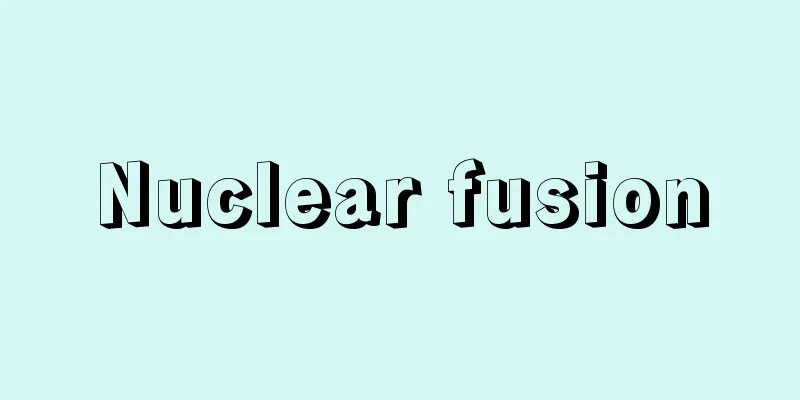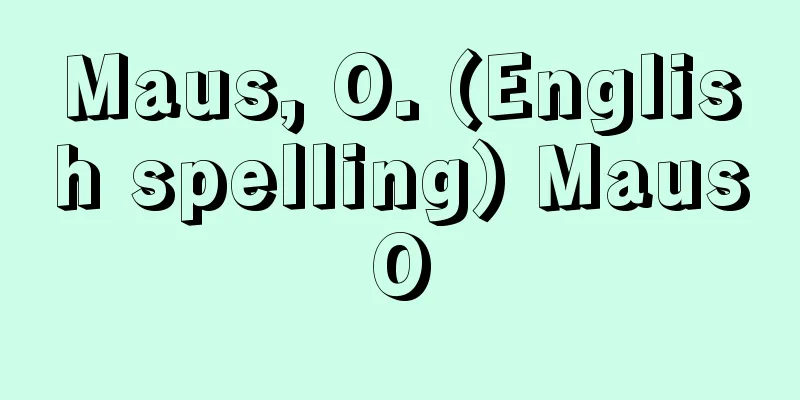Nuclear fusion

|
Nuclear fusion is a nuclear reaction that creates heavier atomic nuclei by colliding lighter atomic nuclei. Light atomic nuclei, or atomic nuclei with small mass numbers, include hydrogen (H) with a mass number of 1 consisting of one proton, deuterium (also called deuterium, represented by D or 2 H) with a mass number of 2 consisting of one proton and one neutron, tritium (also called tritium, represented by T or 3 H) with a mass number of 3 consisting of one proton and two neutrons, and helium ( 4 He) with a mass number of 4 consisting of two protons and two neutrons. Nuclear fusion also releases a large amount of energy, just like nuclear fission, which is a nuclear reaction in which heavy atomic nuclei such as uranium split to create lighter atomic nuclei. The energy of stars that shine like the sun comes from nuclear fusion occurring inside them. Since it has not yet been possible to control nuclear fusion reactions and use them as an energy source, when people generally refer to atomic energy or nuclear energy, they often refer to the energy produced by nuclear fission. However, the terms nuclear energy, atomic energy, and atomic energy actually refer to the energy released by nuclear reactions, including nuclear fusion, not just nuclear fission. [Kato Ikuyoshi] Fusion EnergyThe energy released by nuclear reactions such as nuclear fusion and fission is about one million times that of chemical reactions such as combustion. While the energy of chemical reactions is measured in eV (electron volts), the energy of nuclear reactions is measured in MeV (mega electron volts, where M means one million times). The amount of energy released by a nuclear reaction is determined by the difference between the binding energy of the nucleons (protons and neutrons) that make up the nucleus before the reaction and the binding energy of the nucleons of the nucleus after the reaction. The binding energy per nucleon of an atomic nucleus is large for nuclei with medium mass numbers such as iron (Fe) and nickel (Ni), as shown in , and small for nuclei with small mass numbers such as hydrogen (H) and nuclei with large mass numbers such as uranium (U). Nuclear reactions such as nuclear fusion and nuclear fission, which create stable nuclei with large binding energy from nuclei with small binding energy, release energy associated with the difference in binding energies, resulting in the amount of MeV. It is also clear from that the nuclear fusion of very light atomic nuclei, such as hydrogen and helium, releases more energy per nucleon than the nuclear fission of heavy atomic nuclei, such as uranium. Nuclear fusion reactions can be achieved by colliding atomic nuclei using accelerators, but this only involves the fusion of a small number of atomic nuclei, and is not suitable as an energy source. To fuse materials so that they can be used as fuel, electrons must first be stripped from electrically neutral atoms, leaving only positively charged atomic nuclei. This is called ionization, and the gaseous state of ionized atomic nuclei is called plasma. Inside stars, under the high temperatures and pressures created by gravity, a plasma state is naturally created in which only atomic nuclei, from which electrons have been stripped, collide with each other. However, to achieve nuclear fusion as an energy source on Earth, it is necessary to artificially create a stable, high-temperature, high-pressure plasma for a long period of time. In addition, when atomic nuclei in a plasma state collide with each other, a Coulomb force (the electrical force between charges) acts, which creates an electrical repulsion. To cause a nuclear fusion reaction under this repulsive Coulomb force, atomic nuclei must be collided with each other with energy that exceeds the repulsive force. To do this, a plasma state as hot as possible must be created and confined. For example, the center of the sun is in a plasma state of 240 billion atmospheres and 16 million K (Kelvin), where nuclear fusion reactions proceed slowly. Nuclear fusion reactions caused by plasma in such high temperature and pressure conditions are called thermonuclear reactions. Fusion bombs, such as hydrogen bombs, create a high-temperature, high-pressure plasma state on Earth in an instant, causing nuclear fusion in a short period of time. In this case, the high-temperature, high-pressure state is created by nuclear fission using uranium or other elements, causing the fusion of atomic nuclei such as deuterium and tritium placed around it, generating more energy than nuclear fission. [Kato Ikuyoshi] Harnessing nuclear fusion energyThere are various types of nuclear fusion reactions, but the following two reactions will be available in the future. n stands for neutrons and p for protons. 3 He is the helium isotope helium-3.
[Kato Ikuyoshi] Nuclear fusion reactions inside the sunRegarding the nuclear fusion reactions occurring inside stars, various reactions occur depending on the size and mass of the star. For example, in the case of the Sun, most of the material is hydrogen, and the following chain reaction called the pp chain (also called the pp chain reaction) occurs.
In other words, two protons (p) collide to form a deuterium (D) nucleus, which then collides with a proton to form a helium isotope, helium-3 ( 3He ), and the helium-3 nuclei then collide with each other to form a helium-4 ( 4He ) nucleus. Ultimately, a nuclear reaction occurs in which four protons create one helium atom. During this process, a large amount of energy is generated, gamma rays are emitted, and neutrinos (ν) are released. This chain reaction can be diagrammed as shown in At a temperature of 13 million K, the average reaction times for each are 14 billion years for (1), 10-19 seconds for (2), 5.7 seconds for (3), and 1 million years for (4). In fact, because the initial reaction of the Sun proceeds slowly, it will continue to burn for another 6.3 billion years until all hydrogen is burned up. However, approximately 3.6 × 10 36 hydrogen atoms undergo nuclear fusion every second, releasing an enormous amount of energy (3.8 × 10 26 J). [Kato Ikuyoshi] [Reference] | | |©Shogakukan "> Binding energy and mass number (Figure A) ©Shogakukan "> pp chain (Fig. B) Source: Shogakukan Encyclopedia Nipponica About Encyclopedia Nipponica Information | Legend |
|
軽い原子核の衝突によって、より重い原子核をつくる原子核反応のことを核融合反応、あるいは単に核融合という。軽い原子核、すなわち質量数の小さな原子核には、陽子1個からなる質量数1の水素(H)、陽子と中性子1個ずつからなる質量数2のジュウテリウム(重水素ともいう。Dまたは2Hで表す)、陽子1個と中性子2個からなる質量数3のトリチウム(三重水素ともいう。Tまたは3Hで表す)、陽子と中性子2個ずつからなる質量数4のヘリウム(4He)などがある。ウランなどの重い原子核が分裂して、より軽い原子核をつくる原子核反応である核分裂と同じく、核融合でも大きなエネルギーが放出される。太陽のように輝いている恒星のエネルギーは、内部でおこっている核融合によるものである。核融合反応を制御してエネルギー源として利用することは、まだ実現されていないため、一般に原子力、原子力エネルギーという場合、核分裂によるエネルギーをさすことが多いが、本来は核分裂だけではなく、核融合も含めた原子核反応によって放出されるエネルギーを核エネルギー、原子力エネルギー、原子力などという。 [加藤幾芳] 核融合エネルギー核融合や核分裂など原子核反応に伴って放出されるエネルギーは、燃焼などの化学反応に伴うエネルギーと比較するとおよそ100万倍で、化学反応によるエネルギーがeV(電子ボルト)の単位で測られるのに対し、原子核反応によるエネルギーはMeV(メガ電子ボルト。M=メガは100万倍を意味する)の単位で測られる。原子核反応で放出されるエネルギーの大きさは、反応前の原子核を構成している核子(陽子、中性子)の結合エネルギーと、反応後の原子核の核子の結合エネルギーとの差で決まる。原子核の核子あたりの結合エネルギーは、のように、鉄(Fe)やニッケル(Ni)など中程度の質量数の原子核では大きく、水素(H)など質量数の小さな原子核や、ウラン(U)など質量数の大きな原子核では小さい。結合エネルギーの小さな原子核から結合エネルギーの大きな安定な原子核をつくる核融合や核分裂の原子核反応によって、結合エネルギーの差に伴うエネルギーが放出され、MeVの大きさになるのである。また、ウランなど重い原子核の核分裂に比べ、水素やヘリウムなど非常に軽い原子核の核融合が、より大きな1核子当りのエネルギーを放出することも、から明らかである。 核融合反応は、加速器などを用いて原子核どうしを衝突させることでも実現できるが、それはわずかな量の原子核の核融合であり、エネルギー源としては適当でない。燃料として利用できるように物質を核融合させるには、まず、電気的に中性の原子から電子をはぎ取り、プラスの電荷をもつ原子核だけの状態がつくられなければならない。これをイオン化といい、イオン化した原子核のガス状態をプラズマという。恒星の内部では、重力によってつくられる高温・高圧のもとで、原子どうしの衝突によって電子がはぎ取られた原子核だけのプラズマ状態が自然につくられているが、エネルギー源としての核融合を地上で実現するためには、人工的に高温・高圧のプラズマを安定に長時間つくらなければならない。また、プラズマ状態にある原子核どうしには、衝突する時に電気的な反発を生むクーロン力(電荷と電荷の間の電気力)が働く。この反発するクーロン力のもとで核融合反応をおこすには、反発力を超えるような大きなエネルギーで原子核どうしを衝突させる必要がある。そのためには、できるだけ高温のプラズマ状態をつくり閉じ込めておかなければならない。たとえば、太陽の中心は2400億気圧、1600万K(ケルビン)のプラズマ状態となっていて、ゆっくりと核融合反応が進行している。このように高温・高圧状態のプラズマによる核融合反応を熱核反応という。 地上で高温・高圧のプラズマ状態を瞬間的につくり、わずかな時間の間に核融合をおこさせるのが水素爆弾などの核融合爆弾である。この場合は、ウランなどを用いた核分裂によって高温・高圧の状態をつくり、周りに配置したジュウテリウムやトリチウムなどの原子核を核融合させ、核分裂よりもいっそう大きなエネルギーを発生させるのである。 [加藤幾芳] 核融合エネルギーの利用核融合反応にはさまざまなものがあるが、将来、利用可能な反応は次の二つの反応である。nは中性子(ニュートロン)、pは陽子(プロトン)を表す。3Heはヘリウムの同位元素ヘリウム3である。
[加藤幾芳] 太陽内部の核融合反応恒星の内部で生じている核融合反応についても、星の大きさや質量によってさまざまな反応がおこっている。たとえば、太陽の場合、大部分が水素であり、ppチェイン(ppチェーン、pp連鎖反応とも)とよばれる次の連鎖反応がおこっている。
つまり、2個の陽子(p)が衝突してジュウテリウム(D)の原子核をつくり、これに陽子が衝突してヘリウムの同位元素であるヘリウム3(3He)になり、ヘリウム3の原子核どうしが衝突してヘリウム4(4He)の原子核となる。結局、4個の陽子で1個のヘリウムをつくる核反応がおこっている。この過程で多量のエネルギーが発生し、γ線が放射され、ニュートリノ(ν)が放出される。この連鎖反応を模式的に表すと、のようになる。なお、それぞれの反応平均時間は、温度1300万Kでは、(1)が140億年、(2)が10-19秒、(3)が5.7秒、(4)が100万年である。実際、太陽は最初の反応がゆっくり進行するため、水素が燃えつきるまであと63億年は燃え続ける。しかし、1秒当りおよそ3.6×1036個の水素が核融合し、膨大なエネルギー(3.8×1026J)が放出されている。 [加藤幾芳] [参照項目] | | |©Shogakukan"> 結合エネルギーと質量数〔図A〕 ©Shogakukan"> ppチェイン〔図B〕 出典 小学館 日本大百科全書(ニッポニカ)日本大百科全書(ニッポニカ)について 情報 | 凡例 |
Recommend
Karl Ludwig Kahlbaum
1828‐99 German psychiatrist. Born in Dresden, he s...
Continuous mapping
Let f : X → Y be a mapping from set X to set Y. Th...
Zoanthachy (Sand Drawstring Bag) - Zoanthachy
A general term for coelenterates (Cnidarians) belo...
Blackley, CH (English spelling)
…In 1565, Italian physician Botaro described alle...
Moharaso - Moharanosho
During the Heian period, this manor was located in...
Apollo 8 - Apollo 8 (English spelling)
The first manned Apollo spacecraft was launched on...
Compensatory education
Equal education is an education that aims to reali...
Wimshurst Electric Generator - Wimshurst Electric Generator
A typical device (induction generator) that uses e...
Dance Persuasion - Odori Kudoki
In folk songs, long narrative songs are called &qu...
AWSA - AWSA
…Initially, they tried to realize women's suf...
Moskovskii khudozhestvennyi akademicheskii teatr (English notation)
…Russian theater. Its official name is the Moscow...
Collectivist
...The government responded with three waves of r...
Educational facilities - Educational facilities
…However, it appears that these were built as ann...
Kanjinhonzonsho - Kanjinhonzonsho
A Buddhist book from the Kamakura period. 1 volume...
Santama
The name of the western half of Tokyo (excluding ...




![Pietra dura (English spelling) [Italy]](/upload/images/67cc98b20d6ec.webp)




![Hiraya [village] - Hiraya](/upload/images/67cca5ea20522.webp)